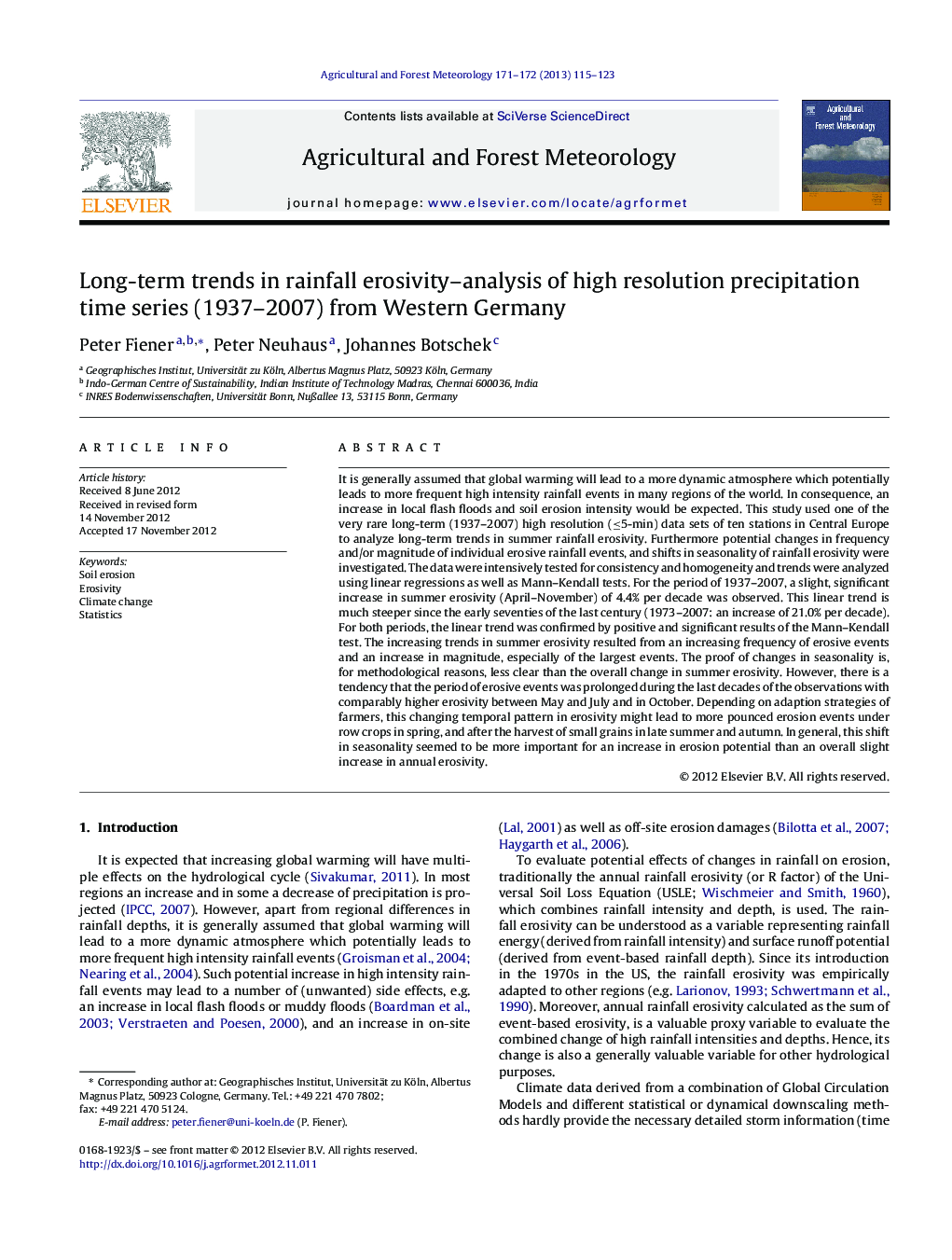| کد مقاله | کد نشریه | سال انتشار | مقاله انگلیسی | نسخه تمام متن |
|---|---|---|---|---|
| 81848 | 158354 | 2013 | 9 صفحه PDF | دانلود رایگان |

It is generally assumed that global warming will lead to a more dynamic atmosphere which potentially leads to more frequent high intensity rainfall events in many regions of the world. In consequence, an increase in local flash floods and soil erosion intensity would be expected. This study used one of the very rare long-term (1937–2007) high resolution (≤5-min) data sets of ten stations in Central Europe to analyze long-term trends in summer rainfall erosivity. Furthermore potential changes in frequency and/or magnitude of individual erosive rainfall events, and shifts in seasonality of rainfall erosivity were investigated. The data were intensively tested for consistency and homogeneity and trends were analyzed using linear regressions as well as Mann–Kendall tests. For the period of 1937–2007, a slight, significant increase in summer erosivity (April–November) of 4.4% per decade was observed. This linear trend is much steeper since the early seventies of the last century (1973–2007: an increase of 21.0% per decade). For both periods, the linear trend was confirmed by positive and significant results of the Mann–Kendall test. The increasing trends in summer erosivity resulted from an increasing frequency of erosive events and an increase in magnitude, especially of the largest events. The proof of changes in seasonality is, for methodological reasons, less clear than the overall change in summer erosivity. However, there is a tendency that the period of erosive events was prolonged during the last decades of the observations with comparably higher erosivity between May and July and in October. Depending on adaption strategies of farmers, this changing temporal pattern in erosivity might lead to more pounced erosion events under row crops in spring, and after the harvest of small grains in late summer and autumn. In general, this shift in seasonality seemed to be more important for an increase in erosion potential than an overall slight increase in annual erosivity.
► Analysis of 71-year data-set of 5-min precipitation from 10 stations in Central Europe.
► Slight increase in summer erosivity (1937–2007) with steeper trends within the last 35 years.
► Increase in frequency and magnitude of erosive events.
► Erosivity increase in spring and autumn especially amplify potential erosion.
Journal: Agricultural and Forest Meteorology - Volumes 171–172, 15 April 2013, Pages 115–123